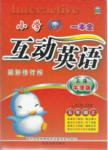题目内容
Dog owners now have a little help understanding their furry friends.A new device(装置) called Bow-Lingual “translates” dog barks into English, Korean or Japanese.Bow-Lingual Japanese inventors spent much time and money analyzing dog barks.They found that dog noises can be broken down into six different emotions: happiness, sadness, frustration, anger, assertion and desire.
Part of the Bow-Lingual device hangs on the dog’s collar.The other part is a handle-held unit for the owner.When the dog barks, the unit displays translated phrases.
Some people have scoffed at Bow-Lingual.“Who would pay $120 to read a dog’s mind?” they ask.
But those who have purchased(购买) Bow-Lingual praise the device.Pet owner Keiko Egawa, of Japan, says it helps her sympathize(同情) with her dog Harry.“Before we go to the park, he always says he wants to play,” says Egawa, “and after a walk, he always says he is hungry.”
Bow-Lingual is not yet available(可用的) in Chinese.So you’d better keep studying Studio Classroom, or soon your dog may know more English than you do!
1.This passage is mainly talking about _____.
A.Bow-Lingual’s inventors B.dog barks and their different emotions
C.talking dogs D.a little help for dog owners
2.Which of the following sentences is TRUE according to the passage?
A.Dog owners now can understand their dogs better.
B.Bow-Lingual enables dogs to talk in English, Korean or Japanese.
C.People who have used Bow-Lingual say it helps them better understand their dogs.
D.More and more Chinese dog owners would keep studying Studio Classroom in order to know more English than their dogs.
3.What does “scoffed at” mean in the fourth paragraph?
A.Shouted at. B.Questioned about.
C.Laughed at. D.Doubted about.
4.The writer of this passage is most likely to be _____.
A.a reporter B.a dog owner
C.an advertiser D.an expert on dog barks
1.D
2.C
3.C
4.A
【解析】略

 互动英语系列答案
互动英语系列答案 mal friends had smaller change in blood pressure and returned most quickly to baseline heart rates. With pets in the room, people also made fewer math mistakes than when doing in front of other companions. It seems people feel more relaxed (放松)around pets, says Allen, who thinks it may be because pets don't judge.
mal friends had smaller change in blood pressure and returned most quickly to baseline heart rates. With pets in the room, people also made fewer math mistakes than when doing in front of other companions. It seems people feel more relaxed (放松)around pets, says Allen, who thinks it may be because pets don't judge.